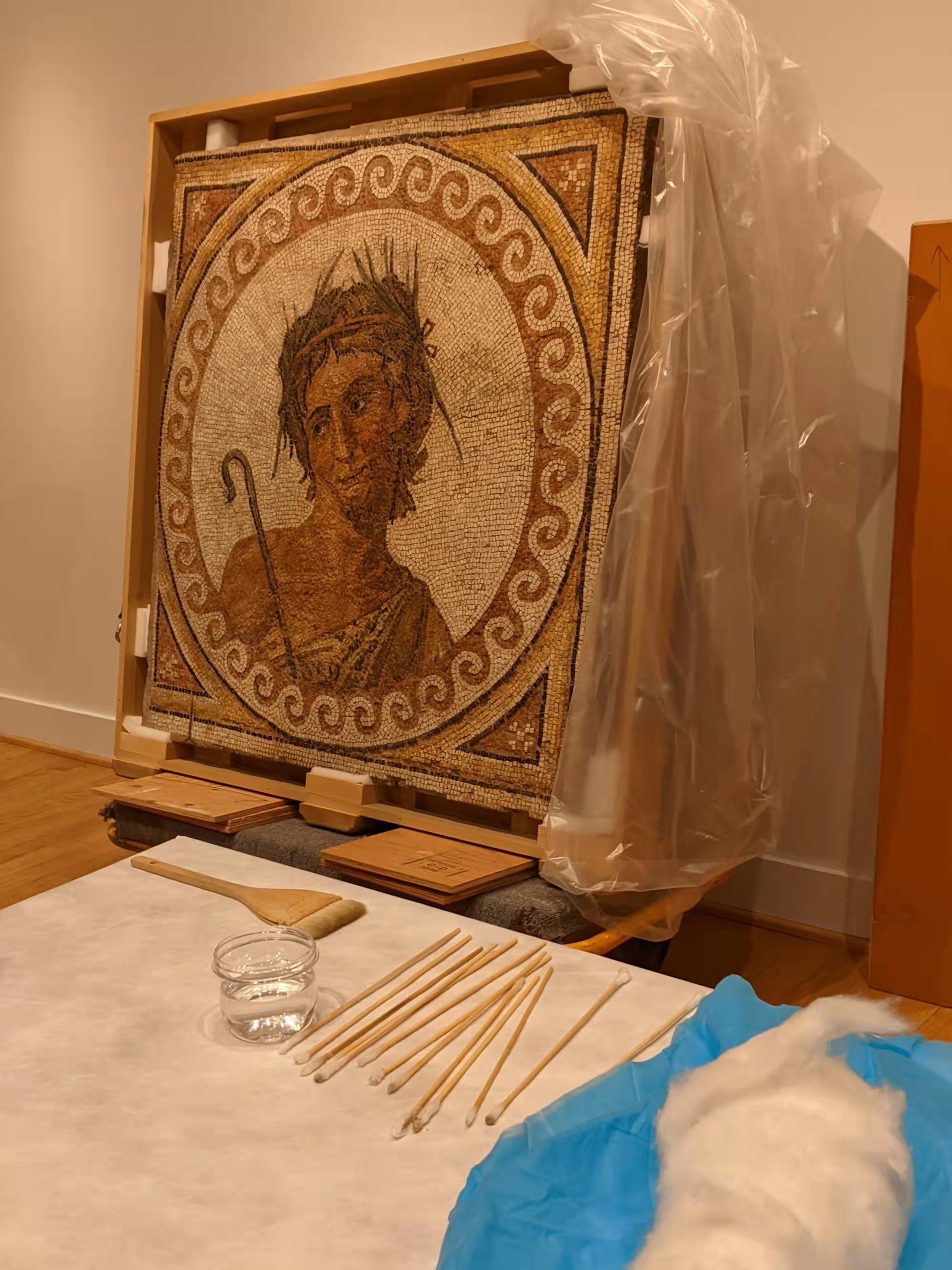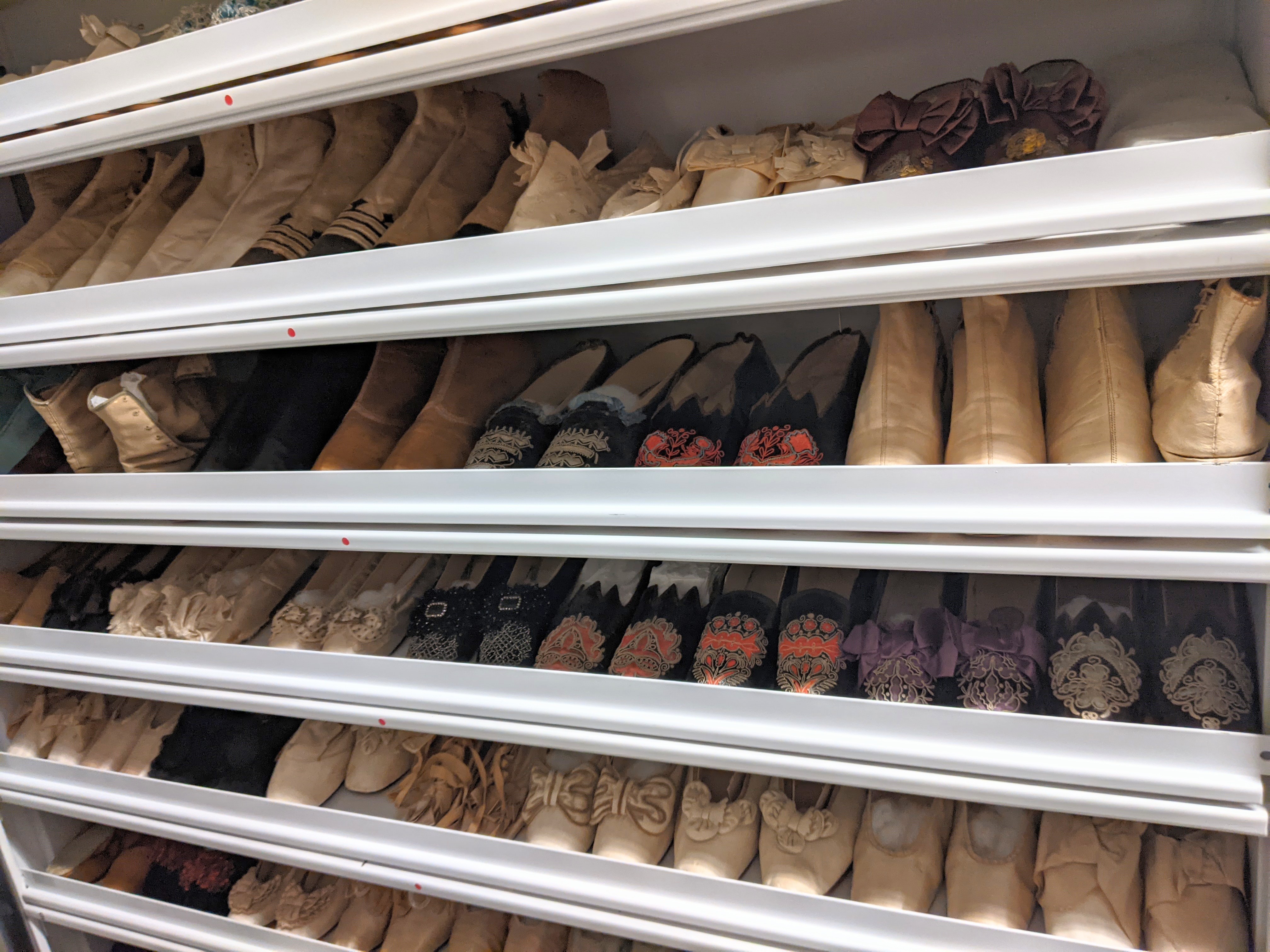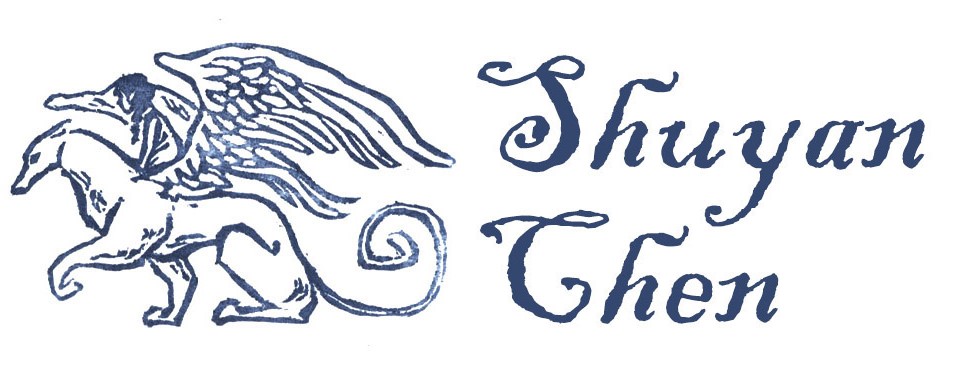This is a RISD Theory and History of Art and Design Department course taught by
Ingrid Neuman, the Senior Conservator at the RISD Museum. I gained from this
course insights into conservation concerns and material natures of textiles, ceramics,
paper, pigment, plastics, metal, and a basic understanding of handling, installation,
storage facilities, museum practises of sustainability.
Condition Report
Agents of deterioration are a main topic in this course, and we examined them in the
contexts of different art materials. I practised writing condition reports with annotated
photographs; the following is a fragment from the condition report I wrote on an
outdoor statue of Roger Williams:
“Not too much erosion has occurred so far, the unprotected surface remains fairly
smooth and pale, especially on the front, west-facing side, although the fingers in
particular have dubious signs of wear and deterioration. The back, east-facing side
appears in a lesser condition, mainly due to the accumulation of green biological stains,
which might be caused by constantly being in shade and moist, as well as past vandalism
due to public accessibility, though now it is better protected from human disturbances
by the extensive railing installed around the monument. The most noticeable of damages
appear on the portal rather than the sculpture; it is the marks of efflorescence, a darker
shade mixed with spots of yellow and white, often vertical and indicative of dripping
rainwater.”
Cleaning
Various cleaning methods were discussed and practised; learned the importance of
taking into consideration the reasons and the extent to which an object is conserved
and cleaned. Shown below is a hands-on session in cleaning Roman mosaics:
removed surface dust with a brush, made cotton swabs with cotton and bamboo
skewers to clean the crevices with distilled water.

Conservation Labs & Storage Visits
Was granted a look behind the scenes at the three conservation departments at the RISD
Museum: Objects, Textiles, and Prints; was introduced to conservators’ current projects
and shown how they handle and store the art objects. Shown below is the storage space
for historical shoes in the textiles department.

